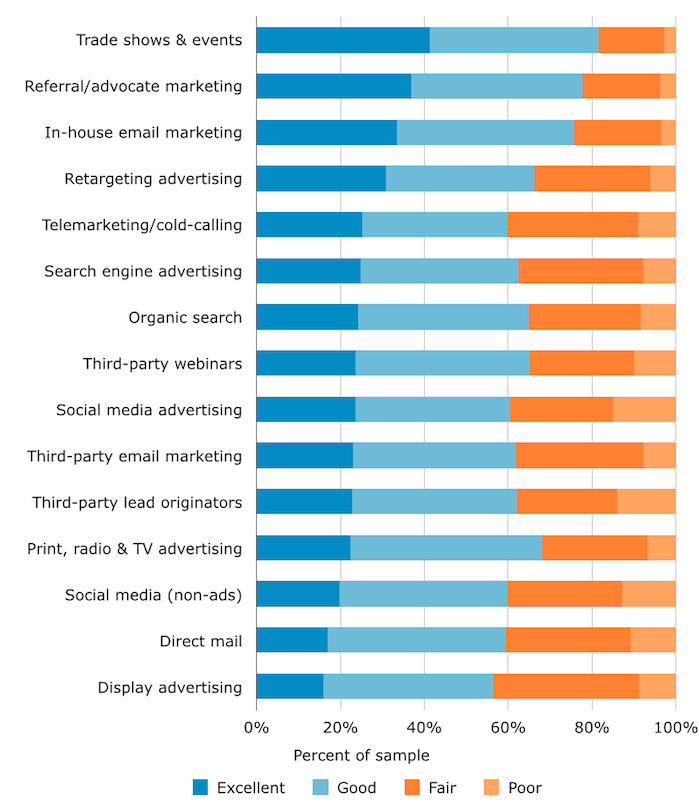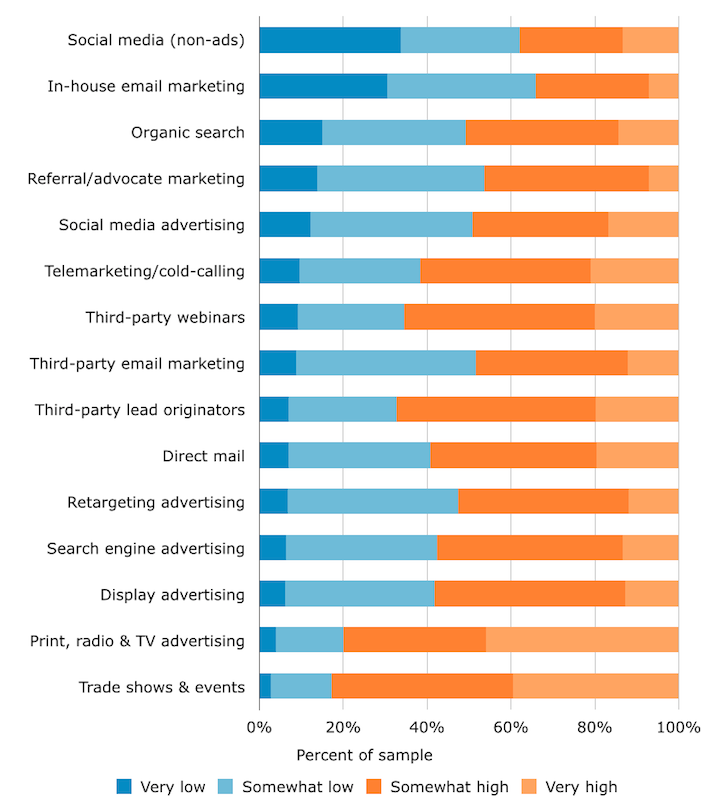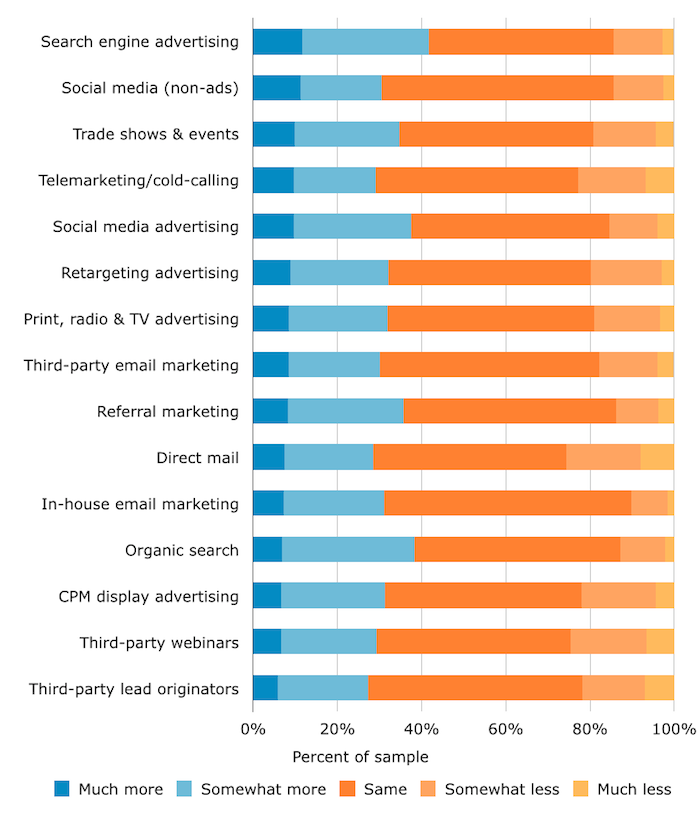In an industrial sector that provides for an increasing segmentation of the interlocutors, and a speeding up of business dynamics in all aspects, the company needs operational tools of meeting, comparison and relationship with its customers or prospect customers. In this context, the fair role is fundamental to build a strong relationship with its customers.
Environment
The Exhibition environmentThe fair system is experiencing a phase of deep reorganization. The fair role is changing and evolving like the companies marketing mix.
After getting over the idea that fairs would be wiped out by the web, that was the main focus of those denigrating the fair system for decades, and after overcoming the idea of creating virtual fairs based on matchmaking on line technologies, nowadays fairs have a leading role for companies and their marketing view, representing one of the main supporting channels of «leads» generations.
Quality of leads, by channel

As evidenced by a study carried out at the end of 2014 (“B2B Demand Generation Benchmark report”, conduced by Content Marketing Institute), on a sample of over 2.000 marketing managesr at the international level, fairs are the best channel to find leads, being more effective than the referential marketing, the Direct Email Marketing and the corporate retargeting. This leads to a total reconsideration of the fairs functions; indeed, today fairs must be compared with the new tools to get more contacts and customers. As you can see in the image, the competitive context of a tool like the fair joins a series of tools of relationship and comparison with the customer; this idea was not even conceivable 5 years ago. According to this study, if from one hand fairs are the best channel to create “leads” generations, from the other hand they are the most expensive one
Cost-per-Lead, by channel

In this context, in terms of “cost per leads”, the first place is occupied by social media, the DEM and the organization research (modern tools that nowadays are new for many companies).
This new context where the fair is included must lead us to reflect on how it can be an “accessible” tool if compared with tools and innovations that have very different costs and methods.
Currently, when you propose any marketing tool, you must be aware that the budget is considerably subdivided and that the item concerning Fairs is at the same level of the budget for social media, DEMs, webinars etc.
The last part of the survey on fairs shows that, in the next few months, the over 2.000 marketing managers want to invest more on SEA (Search engine advertising), the Social Media and the Fairs.
Plans for 2015 Demand Generation Spending, by channel

This shows that fairs are experiencing an important historical phase where, thanks to their verticality and “specialization”, if they will be able to consider themselves as a tool for comparison, news and creation of values for customers, will have a best future.
From the other hand, the overfragmentation of the fair system has led to a deep polarization of the Fairs that now can be divided into “reference” fairs, namely those events the customer cannot miss, for the importance of what proposed by the fair, and into “makeshift” fairs, that are increasingly considered as specific ‘festivals’ on vertical tools, but having makeshift interlocutors, where the opinion leaders and the reference companies are no more intertested in taking part or invest in.
That is why, the Fair must study its visitor and exhibitor customers in depth, in order to know them and meet their needs.
Thus, the Customer Satisfaction and the Business Intelligence must be the main focus of the Fair
